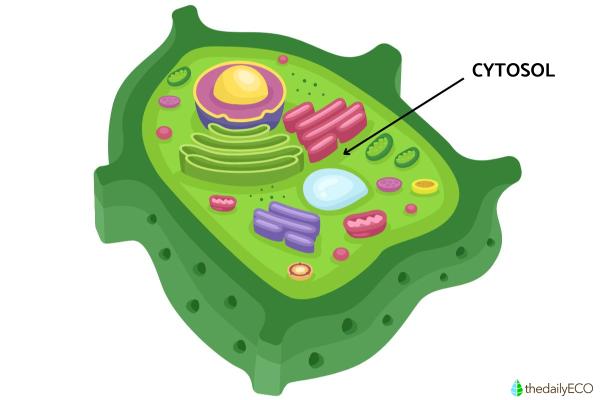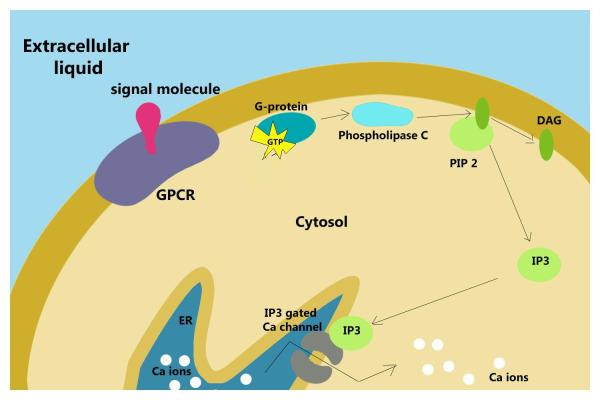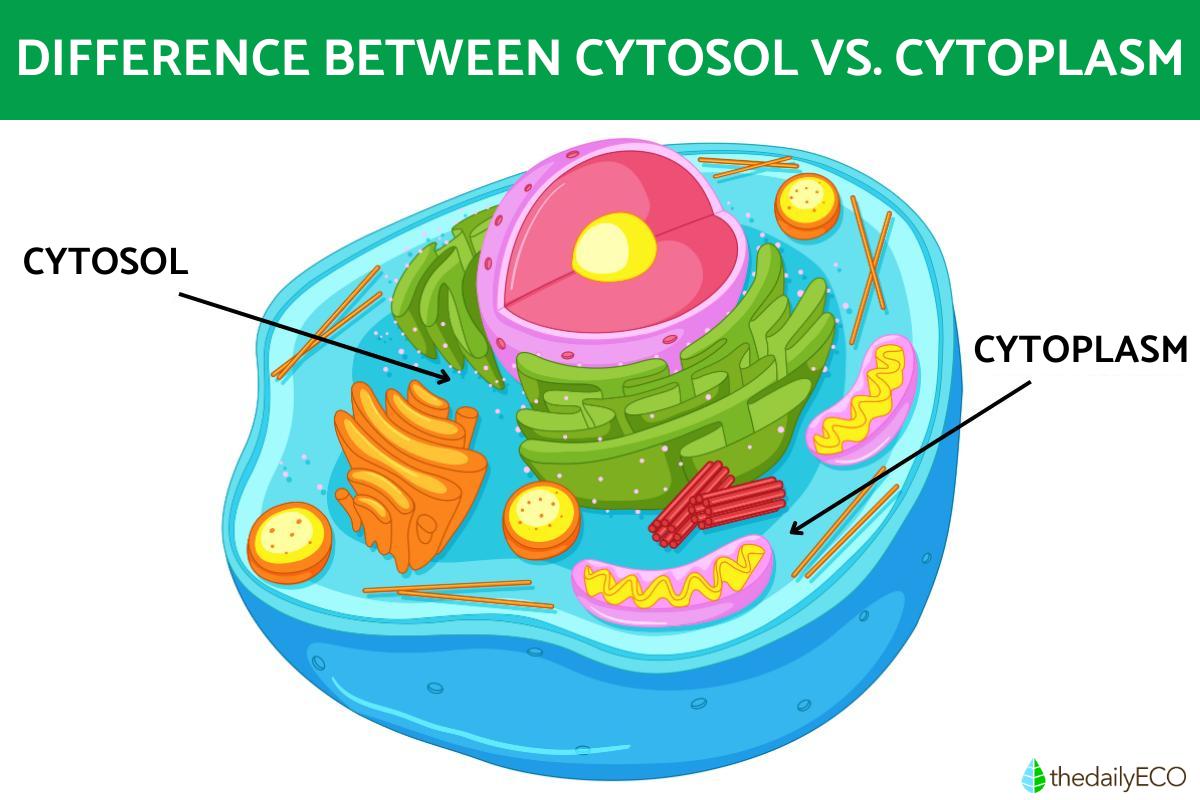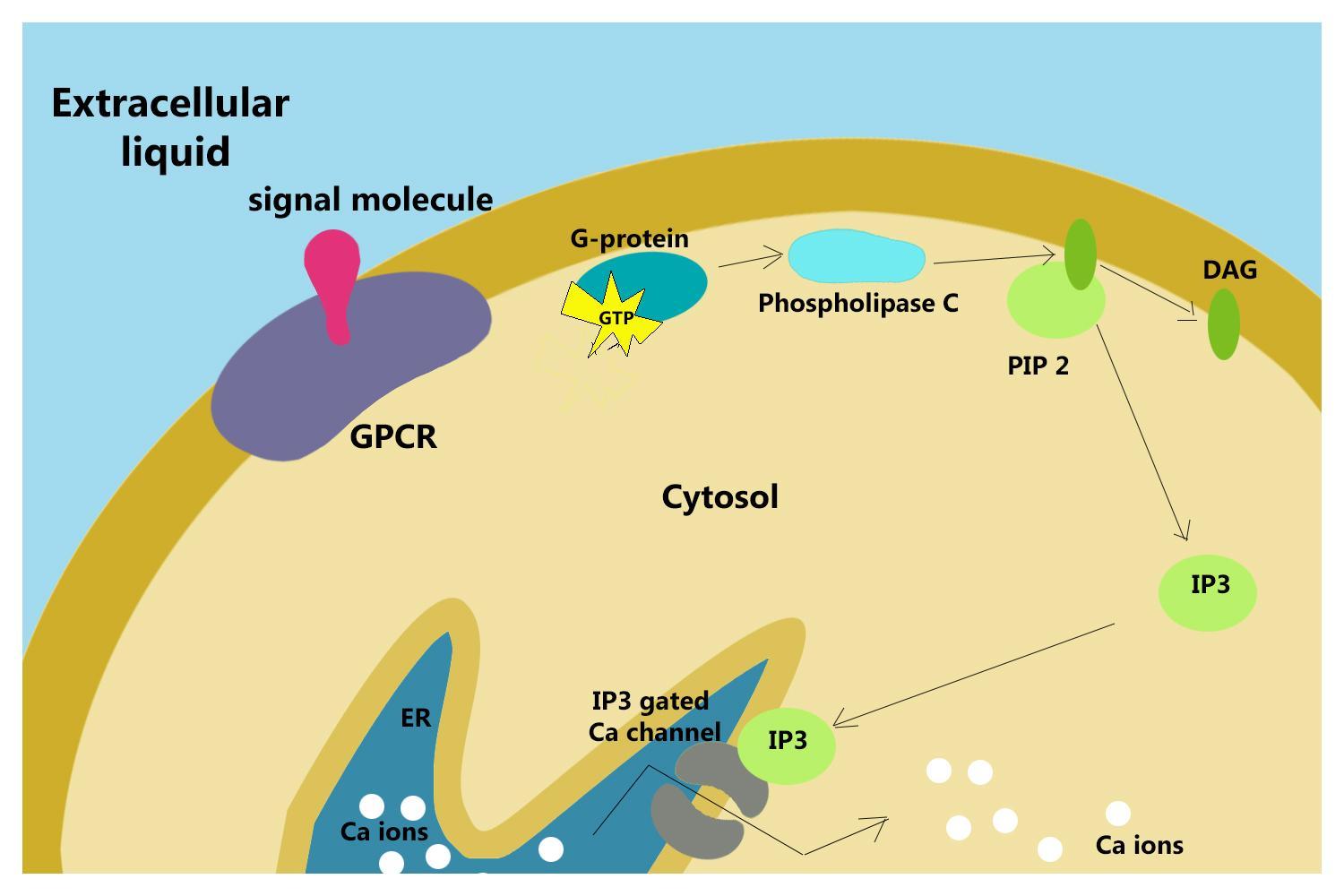What is the Difference Between Cytosol and Cytoplasm?


The cytosol is an amorphous matrix that occupies the spaces between cell organelles. Its function is to act as the main site of signal transduction from the cell membrane to the nucleus and other organelles. It is often confused with the cytoplasm, a related term which encompasses all the parts of the cell not bound by the nucleus. The function of the cytosol is specifically for metabolic processes and intracellular transport. Since these words are similar, many students become confused with the two related terms. thedailyECO helps to clarify by asking what is the difference between cytosol and cytoplasm?
What is cytosol?
The cytosol is an amorphous matrix that occupies the spaces between the cell organelles. It is located between the cell membrane and the nucleus. This aqueous medium is mostly composed of water, representing approximately 70% of its volume. In addition, it contains ions, salts, amino acids, sugars and proteins, the latter including enzymes. These substances are essential for the metabolic processes that keep the cell active and functional.
The function of the cytosol can differ according to the type of cell:
- In eukaryotic cells: the cytosol surrounds organelles that are suspended within it, providing an environment in which various biochemical reactions take place. Although many of these reactions take place within organelles, the cytosol remains crucial for protein synthesis and for the transport of metabolites.
- In prokaryotic cells: metabolic reactions occur directly in the cytosol, highlighting its importance in these organisms.
In both eukaryotes and prokaryotes, the cytosol also acts as a dense medium that facilitates the diffusion of molecules over short distances. This allows for active transport along the cytoskeleton.
Learn more about the difference between prokaryotic and eukaryotic cells in our related article.

Function of cytosol
We now know that the function of the cytosol is to facilitate both transport and metabolic functions within the cell. The following explains the specific functions of the cytosol which come under these two actions:
- Acts as the main site of signal transduction from the cell membrane to the nucleus and other organelles.
- Approximately half of the proteins in eukaryotic cells are located in the cytosol.
- Key reactions such as glycolysis and protein biosynthesis take place in the cytosol.
- Facilitates the transport of metabolites, allowing water-soluble molecules to easily diffuse through it.
- Hydrophobic molecules such as fatty acids and sterols require specific binding proteins for their transport in the cytosol.
- Molecules that enter the cell by endocytosis are transported in vesicles through the cytosol.
- The cytosol provides an environment that allows the interaction and movement of these vesicles, facilitating internal distribution.
- In organisms such as trypanosomes, the cytosol is the main site of energy production, generating ATP.
- Metabolic activity in the cytosol is essential for cell growth and reproduction.
- The viscosity of the cytosol allows for the diffusion of molecules over short distances and active transport along the cytoskeleton.
- It acts as a storage compartment for products of metabolism, such as glycogen and free lipids.
Discover what is the cytoskeleton and its functions in our related guide.
Structure of the cytosol
The cytosol is an essential component of the cell, characterized by a complex and highly dynamic structure. It is mainly composed of water which represents approximately 70% of its volume. Its semi-solid, gelatin-like consistency is due to the large amount of proteins and macromolecules which are suspended in it.
Chemical composition
The cytosol contains a variety of organic molecules, including glucose, amino acids, nucleic acids and fatty acids. This aqueous medium also contains essential ions, such as sodium, potassium and calcium. For example, the concentration of calcium ions is very low at less than 0.0002 mM. This allows them to act as second messengers in cell signaling pathways.
Macromolecules and cytoskeleton
The cytosol contains approximately 200 mg/ml of dissolved proteins, which is about 20% of its total composition. Together with the filament network of microtubules and actin in the cytoskeleton, this high concentration of charged macromolecules contributes to the viscosity of the cytosol.
Gradients and protein complexes
The cytosol exhibits concentration gradients for various molecules. The most notable being those for calcium ions which are generated by the rapid opening of calcium channels. These gradients are crucial for processes such as muscle contraction and neurotransmitter release. In addition, protein complexes are formed that channel substrates between metabolic reactions. Examples of these include the proteasome, which degrades cytosolic proteins, and microcompartments such as the carboxysome in bacteria, which are involved in carbon fixation.
What is cytoplasm?
While the cell is made up of different organelles which carry out the cell's functions, these organelles need a framework within the cell to do so. In cytology, the cytoplasm refers to all the parts of a cell within the cellular membrane which does not include the nucleus. This means the organelles are part of the cytoplasm, not distinct from it.
Since prokaryotic cells do not contain a true nucleus, the cytoplasm encompasses everything within the cell membrane. The cytoplasm has no distinct shape of its own. It is a colloidal solution because the particles are dispersed within it. For this dispersion to occur, the cytosol is fundamental. We explain the difference between cytoplasm vs. cytosol below.
Before you do, you can read a more extensive answer to this question in our article asking what is cytoplasm and its function?

Difference between cytosol and cytoplasm
The cytosol and cytoplasm are essential components of cells, but they represent different aspects of cell structure. The cytoplasm is a semisolid fluid that includes all the contents of the cell that are not in the nucleus. This encompasses the cytosol and all organelles, as well as cytoplasmic inclusions. Specifically, the cytosol is the liquid part of the cytoplasm, consisting primarily of water, along with soluble ions, molecules and proteins.
In terms of diversity, the cytoplasm presents a greater variety of components compared to the cytosol. While the cytosol is the site where all metabolic reactions occur in prokaryotic cells, processes such as glycolysis also take place in this environment in eukaryotes.
In addition, the cytoplasm is responsible for holding organelles in place, facilitating cellular activities such as cell division and cytokinesis. The cytosol plays a crucial role in concentrating dissolved molecules for efficient metabolism and in functions such as signal transduction and molecule transport. Essentially, the cytosol is the medium to contain all the elements of the overall cytoplasm, but it also has specific functions as explained above.
Now you know that the cytosol holds the organelles in place, you may want to know more about what are the different organelles within cells?
If you want to read similar articles to What is the Difference Between Cytosol and Cytoplasm?, we recommend you visit our Biology category.
- Lowe, J., & Stevens, A. (2015). The cell. In Stevens & Lowe's Human Histology (4th ed., pp. 11–36). Elsevier. https://doi.org/10.1016/B978-0-7234-3502-0.00002-4
- Panawala, L. (2017). Difference between cytosol and cytoplasm. ResearchGate. https://www.researchgate.net/publication/314838275_Difference_Between_Cytosol_and_Cytoplasm
- Samo, U. B. K., Saldera, K. A., Batool, S., Samo, R., Tunio, A. R., et al. (2022). Cytoplasm, cytosol and cytoskeleton. Journal of Clinical Research and Medicine, 5(5), 1–6.







